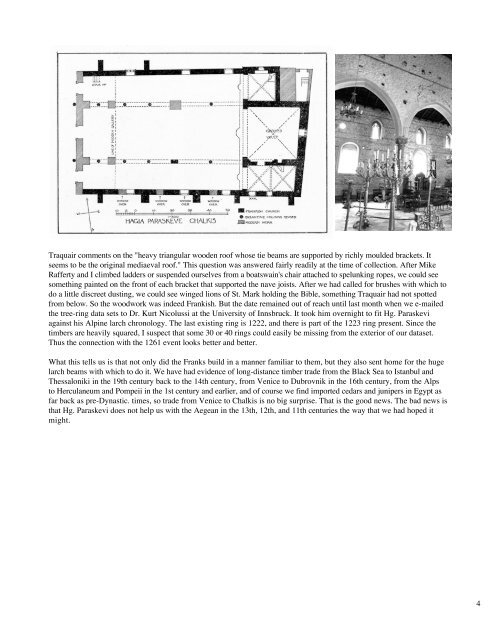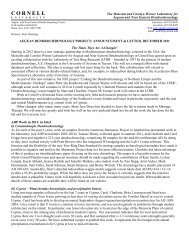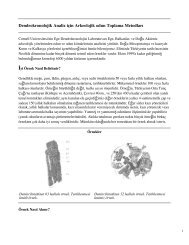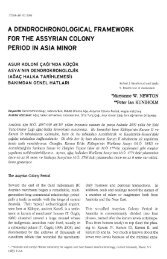Aegean Dendrochronology Project December 2004 Progress Report
Aegean Dendrochronology Project December 2004 Progress Report
Aegean Dendrochronology Project December 2004 Progress Report
You also want an ePaper? Increase the reach of your titles
YUMPU automatically turns print PDFs into web optimized ePapers that Google loves.
Traquair comments on the "heavy triangular wooden roof whose tie beams are supported by richly moulded brackets. It<br />
seems to be the original mediaeval roof." This question was answered fairly readily at the time of collection. After Mike<br />
Rafferty and I climbed ladders or suspended ourselves from a boatswain's chair attached to spelunking ropes, we could see<br />
something painted on the front of each bracket that supported the nave joists. After we had called for brushes with which to<br />
do a little discreet dusting, we could see winged lions of St. Mark holding the Bible, something Traquair had not spotted<br />
from below. So the woodwork was indeed Frankish. But the date remained out of reach until last month when we e-mailed<br />
the tree-ring data sets to Dr. Kurt Nicolussi at the University of Innsbruck. It took him overnight to fit Hg. Paraskevi<br />
against his Alpine larch chronology. The last existing ring is 1222, and there is part of the 1223 ring present. Since the<br />
timbers are heavily squared, I suspect that some 30 or 40 rings could easily be missing from the exterior of our dataset.<br />
Thus the connection with the 1261 event looks better and better.<br />
What this tells us is that not only did the Franks build in a manner familiar to them, but they also sent home for the huge<br />
larch beams with which to do it. We have had evidence of long-distance timber trade from the Black Sea to Istanbul and<br />
Thessaloniki in the 19th century back to the 14th century, from Venice to Dubrovnik in the 16th century, from the Alps<br />
to Herculaneum and Pompeii in the 1st century and earlier, and of course we find imported cedars and junipers in Egypt as<br />
far back as pre-Dynastic. times, so trade from Venice to Chalkis is no big surprise. That is the good news. The bad news is<br />
that Hg. Paraskevi does not help us with the <strong>Aegean</strong> in the 13th, 12th, and 11th centuries the way that we had hoped it<br />
might.<br />
4








